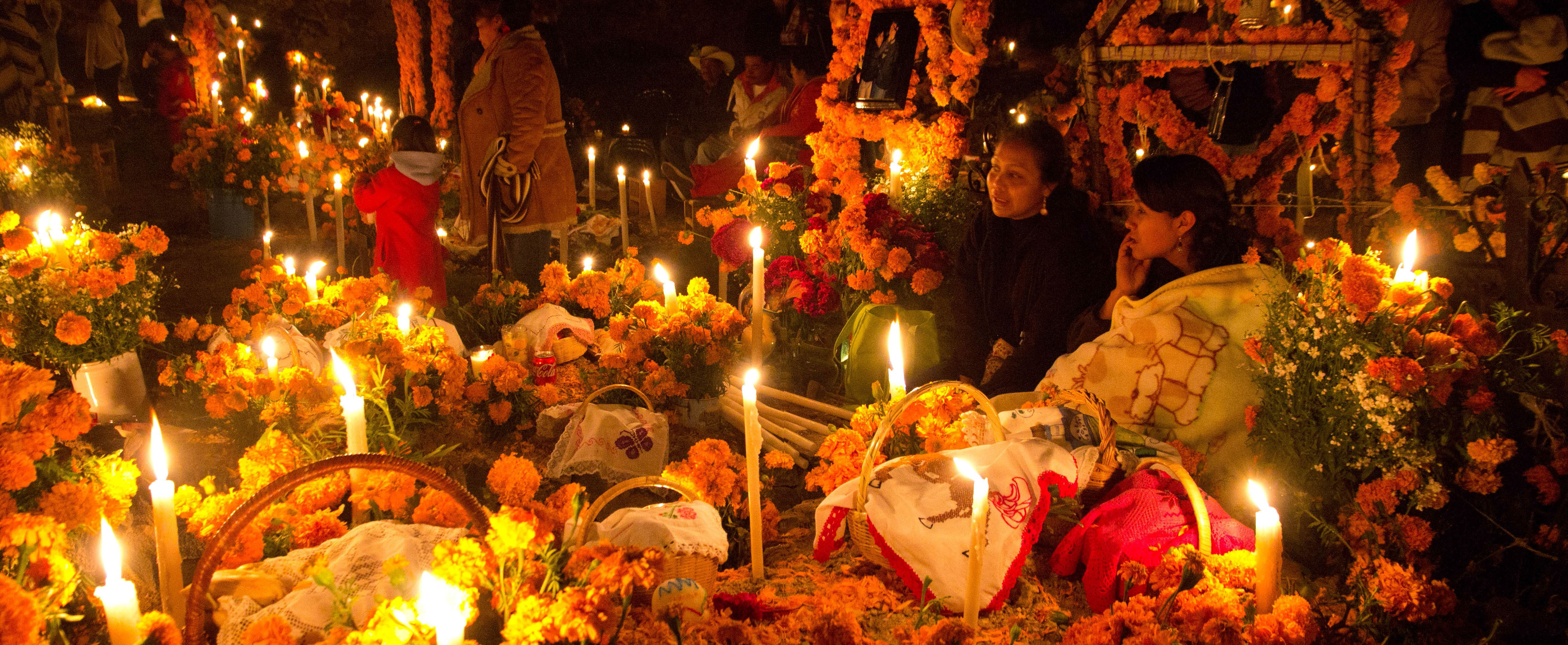There is a story once told by Bernardino de Sahagún, the Franciscan friar, missionary priest and pioneering ethnographer who participated in the Spanish colonisation of Mexico. It may be apocryphal, a retrofitted fiction crafted by the Spaniards to facilitate their conquest but, given the prevalence of the returning god, demi-god or king in different mythologies around the world, it carries the ring of truth. It stated that King Moctezuma II, who ruled the Aztec kingdom during the arrival of Hernán Cortés, welcomed the conquistador’s appearance, recalling an indigenous belief and proclaiming the Spaniard to be an incarnation of Quetzalcóatl, the feathered serpent deity who was destined to return and restore his sacred kingdom of Tollan.

MAIN Day of the Dead in the Lake Pátzcuaro area. Traditionally, people decorate tombs with marigolds and offerings, and spend a night next to the tomb of their deceased family member
It is said that in Mexico today, and even among some Latinos living in the US, there are people who still hold onto this belief, hoping that one day a great Aztec deity might return in a symbolic or political context. For Aztec culture still holds a prominent place in modern Mexico, in its national identity and within the hearts of so many of those who call it home. In 1964, the then-Mexican president dedicated a plaque at Tlatelolco, which, alongside the ancient capital of Tenochtitlán, stands as the primary archaeological site in Mexico City. It reads: “Heroically defended… Tlatelolco fell to the power of Hernán Cortés. It was neither a triumph nor a defeat but the painful birth of the Mestizo nation that is Mexico today.” ‘Mestizo’ is a term that refers to a person of combined Spanish and Native American descent, and it’s the foundation of the Mexican gene pool. If one stands before the archaeological site of Tlatelolco in the middle of Mexico City, the Aztec pyramid in the sacred precinct rises before the early colonial church of Santiago Tlatelolco, while modern tower blocks look down. Here we see all three cultures - Aztec, Spanish, Mestizo - gathered together as one. Modern Mexicans, like their Aztec forbearers, carry a deep cultural memory and it’s both fitting and understandable that just as the Aztecs looked back, misty-eyed and proud, at their own Toltec heritage, so do Mexicans look back with pride at the Aztec peoples. One only need consider the Mexican flag: centred amid the green, white and red vertical stripes sits an eagle holding a snake and standing atop a cactus. This image was important in the Aztec world, signifying the sacred spot where Huitzilopochtli, the god of war and the sun, told his people to build the great city of Tenochtitlán. It forms the central image of the frontispiece on the Codex Mendoza. Veneration for the Aztec past is palpable at every level in Mexico, including the administrative: the central government funds archaeology, while the native archaeologists themselves unearth the past in honour of the national heritage. Many of the funds come from the federally backed National Institute of Anthropology and History, and it seems to have poured a small fortune into the excavation of the Templo Mayor at Tenochtitlán, the great symbol of the Aztec city. When the excavation was underway between 1978 and 1982, the aptly named archaeological leader Eduardo Matos Moctezuma became something of a national celebrity.